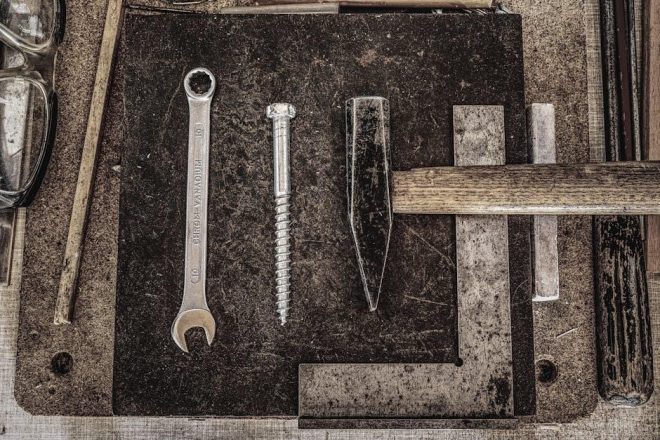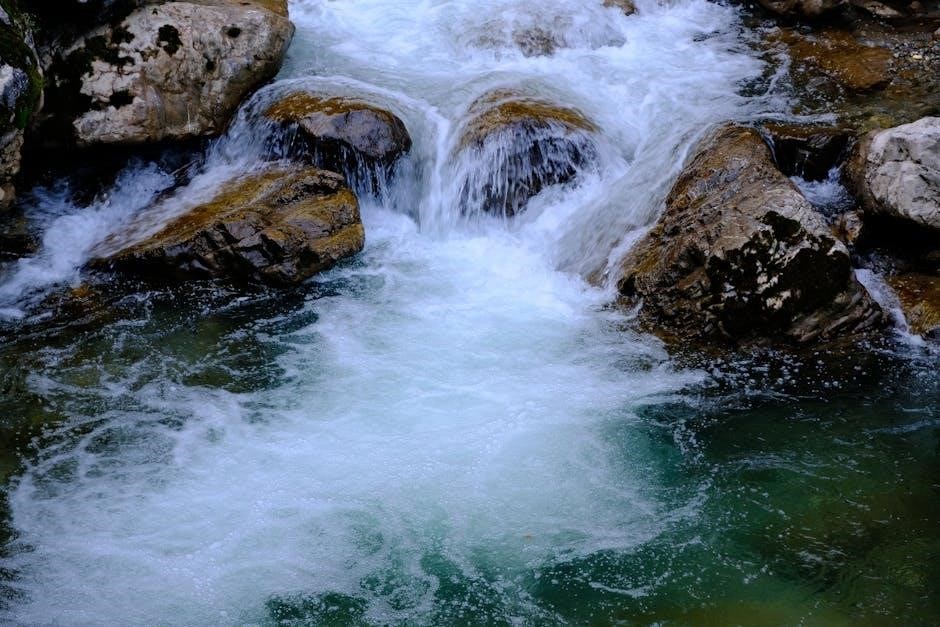Welcome to the Bestway Air Mattress Instructions guide! This comprehensive manual helps you set up, maintain, and troubleshoot your air mattress for optimal comfort and safety․
Overview of Bestway Air Mattress
The Bestway Air Mattress is a popular inflatable bed designed for comfort and convenience․ It features a durable construction with a soft, flocked top layer and a sturdy PVC bottom for stability․ Available in various sizes, including queen and twin models, it suits different sleeping preferences․ The mattress is ideal for both indoor and occasional outdoor use, offering a comfortable sleeping surface for guests, camping, or temporary setups․ Many models come with built-in pumps for easy inflation and deflation, while others may require external pumps․ The design emphasizes portability and ease of use, making it a practical solution for various needs․ This overview highlights its key characteristics and benefits, ensuring users understand its capabilities and limitations before diving into detailed instructions․
Key Features of Bestway Air Mattress
The Bestway Air Mattress is designed for comfort and convenience, featuring a soft, flocked top layer for a cozy sleeping surface and a durable PVC bottom for stability․ Many models come with a built-in dual pump, allowing for quick and easy inflation and deflation․ The mattress is available in various sizes, including queen and twin options, to accommodate different needs․ It also includes weight capacity guidelines to ensure safe use․ The flocked material helps prevent sheets from slipping, while the compact design makes it easy to store when not in use․ These features make it a practical and comfortable choice for both indoor and outdoor settings, providing a reliable sleeping solution for guests or temporary arrangements․
Importance of Following Instructions
Following the Bestway Air Mattress Instructions is essential for ensuring safety, optimal performance, and longevity of the product․ Proper setup and inflation procedures prevent damage and ensure the mattress functions as intended․ Adhering to weight limits and usage guidelines helps avoid potential risks or injuries․ Cleaning and maintenance instructions preserve the material quality and hygiene․ Ignoring safety precautions, such as those for infants and pets, can lead to accidents․ By following the instructions, users can enjoy a comfortable and durable sleeping solution while maintaining warranty validity․ Always prioritize safety and satisfaction by adhering to the provided guidelines for the best experience with your Bestway Air Mattress․

Safety Precautions
Always follow safety guidelines to ensure proper use and avoid accidents․ Read the manual carefully before setup and use to maintain product integrity and user safety․
General Safety Guidelines
Always read and follow the user manual carefully before setting up or using the Bestway air mattress․ Ensure the mattress is placed on a flat, stable surface, away from sharp objects to prevent punctures․ Avoid overloading the mattress beyond its recommended weight capacity to maintain structural integrity․ Never leave infants or pets unsupervised on the mattress, as it may pose a suffocation or injury risk․ Keep the mattress away from open flames or sparks, as it is made of inflatable materials․ Regularly inspect the mattress for signs of damage or wear and tear․ Follow all provided safety warnings to ensure safe and enjoyable use of your Bestway air mattress․
Weight Limits and Usage Restrictions
Adhere to the maximum weight capacity specified in your Bestway air mattress manual to ensure safety and prevent damage․ Exceeding the weight limit can lead to structural failure or deflation․ The mattress is designed for indoor use only and should not be exposed to extreme temperatures or weather conditions․ Avoid placing heavy objects on the mattress, as this can cause punctures or uneven surfaces․ Children should be supervised while using the mattress, and it is not recommended for infants under 15 months․ Always follow the manufacturer’s guidelines for proper usage and maintenance to extend the lifespan of your Bestway air mattress and ensure a safe sleeping environment․
Precautions for Infants and Pets
Always prioritize the safety of infants and pets when using the Bestway air mattress․ Infants under 15 months should never be left unattended or allowed to sleep on the mattress due to suffocation risks․ The mattress is not designed to meet the safety standards for cribs or infant beds․ Pets should be kept away from the mattress to prevent punctures from claws or teeth․ Supervise pets if they are near the mattress to avoid accidental damage․ Regularly inspect the mattress for any signs of wear or tears to ensure it remains safe for use․ Keep the mattress clean to prevent germs or odors that could affect infants or pets․ Always follow the manufacturer’s guidelines for safe and appropriate usage․

Unboxing and Initial Setup
Unroll the mattress on a flat, debris-free surface with the flocked side up and PVC side down․ Ensure the area is clear for proper setup and safety․ Inspect for damage before inflation to ensure optimal performance and longevity․
What’s Included in the Package
Your Bestway Air Mattress package typically includes the inflatable mattress with a built-in pump, a storage bag for convenient transportation, and a repair kit for punctures․ Additionally, you’ll find a detailed user manual with setup instructions, safety guidelines, and maintenance tips․ Some models may also include extra features like a remote control or additional comfort layers․ Always verify the contents against the packaging list to ensure no items are missing․ The mattress features a soft, flocked top for comfort and a durable PVC bottom for support․ Dimensions and exact contents may vary depending on the model, but the essentials are designed to provide a comfortable and safe sleeping experience․
Inspecting the Mattress for Damage
Before using your Bestway Air Mattress, carefully inspect it for any signs of damage․ Unroll the mattress on a flat surface and check for leaks by inflating it slightly․ Look for punctures, tears, or holes in the material, especially around the seams and valve areas․ Ensure the flocked top is intact and free from abrasions․ Verify that the valve is functioning properly and not loose․ If you find any damage, do not use the mattress and contact customer support․ Regular inspections will help ensure longevity and safety․ Always address any issues promptly to maintain the mattress’s performance and prevent further damage during use․
Preparing the Area for Setup
Before setting up your Bestway Air Mattress, ensure the area is clean, flat, and free from objects or debris․ Unroll the mattress on a smooth surface, such as a floor or bed frame, and position it with the flocked side facing up and the PVC side down․ Clear the space around the mattress to prevent damage or obstruction․ Use a damp cloth to wipe the surface if necessary․ Ensure the area is dry and even to maintain the mattress’s stability․ Proper preparation ensures a comfortable and safe setup, as an uneven surface or debris could cause damage or discomfort during use․

Inflation Instructions
Use the built-in pump or manual methods to inflate the mattress․ Attach the pump, turn it on, and allow 3-5 minutes for full inflation․ Ensure it’s firm but not over-inflated for optimal comfort and durability․
Step-by-Step Inflation Process
Unroll the mattress on a flat, clean surface, ensuring the flocked side faces up․ Locate the valve and attach the built-in pump securely․ Turn on the pump and allow it to inflate the mattress fully, which typically takes 3-5 minutes․ Check the firmness by pressing down; it should feel supportive but not overly rigid․ If using a manual method, insert the nozzle into the valve and inflate steadily until the mattress reaches the desired firmness․ Once inflated, turn off the pump and tighten the valve cap to prevent air leakage․ For optimal comfort, ensure the mattress is evenly inflated and ready for use․
Using the Built-In Pump
Attach the built-in pump to the valve, ensuring a secure connection․ Turn on the pump and allow it to inflate the mattress automatically․ Monitor the pressure to avoid over-inflation․ The pump will stop once the mattress reaches the recommended firmness․ If desired, you can manually adjust the firmness by turning off the pump earlier․ After inflation, tighten the valve cap to seal the air inside․ For optimal performance, ensure the pump is clean and free from debris․ Regularly check the valve for tightness to prevent air leakage․ The built-in pump provides a convenient and efficient way to achieve the perfect firmness for a comfortable sleeping experience․
Manual Inflation Methods
For manual inflation, attach the valve to the mattress and use a compatible pump or foot pedal․ Ensure the valve is fully open before starting․ Inflate slowly, checking firmness regularly․ Once firm, close the valve tightly․ For extra firmness, use short, quick pumps․ Avoid over-inflation to prevent damage․ If using a manual pump, maintain steady pressure until the mattress reaches desired firmness․ Always store the valve securely after inflation to prevent air leakage․ Manual methods provide control over firmness, ideal for personal preference․ Ensure the mattress lies flat during inflation for even air distribution․ Regularly check for leaks to maintain optimal comfort and support;

Deflation and Storage
Proper deflation involves opening the valve fully and allowing air to escape․ Store the mattress in a dry, cool place, protected from sharp objects and sunlight․
How to Deflate the Mattress Properly
To deflate the Bestway air mattress, locate the valve and open it fully to allow air to escape․ Gently press the mattress to release remaining air․ Once deflated, roll or fold the mattress tightly to minimize storage space․ Ensure the valve is closed securely after deflation to prevent re-inflation․ For optimal storage, place the mattress in a protective bag or cover to shield it from dust and moisture․ Always store in a dry, cool area away from direct sunlight and sharp objects․ Proper deflation and storage will help maintain the mattress’s quality and longevity․
Best Practices for Storage
Store the Bestway air mattress in a cool, dry place away from direct sunlight and moisture․ Ensure the mattress is completely deflated and clean before storage to prevent mold or mildew․ Use a protective bag or cover to shield it from dust and damage․ Avoid folding or bending the mattress sharply, as this may cause punctures․ Store it flat or rolled tightly to save space․ Do not place heavy objects on top of the mattress․ Keep it away from sharp objects and pets․ Proper storage ensures the mattress remains in good condition for future use․ Always follow the manufacturer’s guidelines for storage to maintain its quality and longevity․

Recommended Storage Conditions
Store the Bestway air mattress in a cool, dry environment with a consistent temperature between 60°F and 80°F (15°C to 27°C)․ Avoid damp areas like basements or attics prone to moisture․ Keep the mattress away from direct sunlight to prevent material degradation․ Ensure the storage area is well-ventilated to reduce humidity․ Avoid extreme temperatures or fluctuating conditions․ Place the mattress in a protective bag to shield it from dust and pests․ Do not store it near heating vents or radiators․ Always check the mattress for signs of damage before storing․ Proper storage conditions help preserve the mattress’s quality and ensure it remains durable for future use․

Maintenance and Cleaning
Regularly clean the mattress with a damp cloth and mild soap․ Avoid harsh chemicals or abrasive cleaners․ Dry thoroughly after cleaning to prevent mildew or damage․
Cleaning the Mattress Surface
Use a clean, damp cloth to gently wipe the surface of the mattress․ Avoid harsh chemicals or abrasive cleaners, as they may damage the material․ For stubborn stains, mix mild soap with water and apply gently․ Rinse thoroughly with a damp cloth to remove any soap residue․ Allow the mattress to air dry completely to prevent mildew or odors․ Regular cleaning helps maintain hygiene and prolongs the mattress’s lifespan․ Always inspect the mattress for signs of dirt or mildew before use․ For tough stains, let the solution sit for a few minutes before wiping clean․ Spot cleaning is recommended to address spills or dirt promptly․
Removing Stains and Odors
For stains, apply a solution of mild soap and water to the affected area using a clean, damp cloth․ Gently scrub the stain without applying too much pressure․ Allow the solution to sit for a few minutes before wiping clean․ For odors, sprinkle baking soda evenly across the mattress surface, let it sit for 30 minutes to an hour, then vacuum up․ For tougher odors, mix equal parts water and white vinegar in a spray bottle, apply to the area, and let it sit before wiping dry․ Always ensure the mattress is completely dry after cleaning to prevent mildew․ Avoid using harsh chemicals or abrasive cleaners, as they may damage the material․ Regular cleaning helps maintain freshness and hygiene․
Regular Maintenance Tips
Regular maintenance ensures your Bestway Air Mattress remains in excellent condition․ After each use, allow the mattress to air out to prevent moisture buildup․ Store it in a cool, dry place when not in use, avoiding direct sunlight․ Inspect the mattress periodically for signs of wear, such as small punctures or loose seams, and address them promptly․ Rotate or flip the mattress every few months to ensure even wear․ Clean the surface regularly with a damp cloth, avoiding harsh chemicals․ Check the pump’s function and ensure all valves are tightly closed after deflation․ Following these tips will extend the lifespan of your air mattress and maintain its comfort and performance․

Troubleshooting Common Issues
Identify and address common issues like leaks, punctures, or uneven firmness․ Check for loose valves or blockages in the pump․ Refer to the manual for repair guidance․
Fixing Leaks and Punctures
To fix leaks or punctures, start by locating the source using a mixture of soap and water, which will bubble at the leak site․ Clean and dry the area thoroughly․ Apply a patch kit specifically designed for vinyl, following the manufacturer’s instructions․ Allow the adhesive to dry completely before re-inflating the mattress․ For smaller punctures, a DIY repair with a vinyl patch and adhesive can work․ Always ensure the mattress is fully deflated before attempting repairs․ Regular inspections and proper storage can prevent future leaks․ Refer to the user manual for additional guidance or contact Bestway support if issues persist․
Addressing Firmness or Sagging
If your Bestway Air Mattress feels too soft or sags, check the inflation level first․ Ensure the mattress is fully inflated according to the recommended pressure․ Use the built-in pump or manual methods to achieve the desired firmness․ If sagging persists, inspect for leaks or punctures and repair them․ Place the mattress on a flat, even surface to prevent uneven support․ For added stability, consider using a mattress topper or placing a sturdy board beneath it․ Regularly inspect and maintain the mattress to avoid sagging․ Proper inflation and a level surface are key to maintaining optimal firmness and comfort․ Refer to the user manual for specific inflation guidelines․
Solving Pump-Related Problems
If the pump on your Bestway Air Mattress isn’t working properly, start by ensuring it’s correctly connected to a power source․ Check for any blockages or kinks in the hose that may restrict airflow․ If the pump is making unusual noises or not inflating, inspect for loose connections or debris․ For manual pumps, ensure the valve is securely attached and the handle is aligned properly․ If issues persist, consult the user manual for troubleshooting steps or contact Bestway customer support for assistance․ Regular maintenance and proper storage can help prevent pump-related issues․ Always follow the manufacturer’s guidelines for optimal performance․

Warranty and Customer Support
Bestway provides a limited warranty covering manufacturing defects․ For inquiries or issues, contact their customer support team directly via phone or email for prompt assistance and guidance․
Understanding the Warranty Period
Your Bestway Air Mattress is backed by a limited warranty that covers manufacturing defects for a specified period․ The warranty typically starts from the date of purchase and varies depending on the model and region․ It’s essential to review the warranty document provided with your product for exact terms and conditions․ The warranty does not cover damage caused by misuse, improper maintenance, or normal wear and tear․ To ensure your warranty remains valid, always follow the instructions for setup, inflation, and storage․ Keep your purchase receipt and warranty documentation safe, as they may be required for any claims․ Understanding the warranty period ensures you can enjoy your air mattress with peace of mind․
How to Contact Bestway Support
For any inquiries or assistance with your Bestway Air Mattress, you can reach their customer support through multiple channels․ Visit the official Bestway website and navigate to the “Contact Us” section, where you’ll find a contact form, email address, and phone number․ Support is available to address questions about setup, maintenance, or warranty claims․ Additionally, many Bestway products include a customer service leaflet with detailed contact information․ For faster assistance, consider using the live chat feature on their website, if available․ Ensure to have your product serial number and purchase details ready when reaching out for support․ This streamlined process ensures your concerns are resolved efficiently and promptly․
Repair and Replacement Options
If your Bestway Air Mattress is damaged or malfunctioning, several repair and replacement options are available․ Start by reviewing the warranty period, which typically covers manufacturing defects for a specified time․ For warranty claims, contact Bestway customer support with your product serial number and proof of purchase․ They may provide a replacement or repair kit․ For non-warranty issues, consider using DIY repair kits for minor punctures or leaks․ If the damage is extensive, contact Bestway support for guidance on replacement options․ Always ensure repairs are done with compatible materials to maintain product integrity․ For further assistance, visit the official Bestway website or consult the user manual for detailed instructions․

User Reviews and Feedback
Users praise the Bestway Air Mattress for its comfort and durability, with many reviews highlighting easy setup and reliability․ Feedback from YouTube unboxings and forums confirms its popularity․
Common Praise for Bestway Air Mattress
The Bestway Air Mattress has received widespread acclaim for its exceptional comfort, durability, and ease of use․ Many users highlight its sturdy construction and ability to maintain firmness throughout the night․ The built-in pump is often praised for its quick inflation and deflation process, making setup and storage hassle-free․ Customers also appreciate the soft, flocked top layer, which provides a cozy sleeping surface․ Several reviews mention that the mattress is ideal for both indoor and occasional outdoor use, offering great value for its price․ Overall, the Bestway Air Mattress is frequently recommended for its reliability and performance, making it a popular choice among air mattress users․
Common Complaints and Solutions
Some users report issues with leaks and punctures, which can often be resolved by inspecting the mattress for small tears and using a patch kit․ Others find the mattress too firm, but this can be adjusted by slightly deflating it․ A few customers mention the weight limit restrictions, emphasizing the importance of adhering to the recommended capacity to prevent sagging․ Additionally, some users note that the pump can be noisy, but this is a common issue with most air mattresses․ To address these concerns, regular maintenance and proper storage are essential․ Following the provided instructions carefully can help mitigate these issues and ensure optimal performance․
Real-World Usage Scenarios
The Bestway Air Mattress is ideal for various practical scenarios, such as guest accommodations, camping trips, or temporary bedding during home renovations․ Its portability and ease of setup make it a great solution for outdoor adventures or small spaces․ Many users appreciate its comfort for overnight stays, while others rely on it as a durable option for frequent travelers․ The mattress is also a popular choice for emergency situations, such as power outages or unexpected guest visits․ By following the provided instructions, users can ensure the mattress performs well in these real-world applications, offering both convenience and comfort in diverse settings․
By following the Bestway Air Mattress Instructions, users can ensure safety, comfort, and durability․ Proper setup, maintenance, and storage are key to enjoying a superior sleeping experience consistently․
Properly inflate the mattress using the built-in pump or manual methods, ensuring it reaches the recommended firmness․ Always follow weight limits and safety guidelines to avoid damage or injury․ Regularly clean the surface with a damp cloth and avoid harsh chemicals․ Store the mattress in a cool, dry place when not in use, ensuring it is completely dry to prevent mold․ Inspect for punctures and address any issues promptly․ Refer to the user manual for troubleshooting common problems like leaks or firmness issues․ By adhering to these guidelines, you can extend the lifespan of your Bestway Air Mattress and ensure a comfortable, safe sleeping experience․
Final Tips for Optimal Use
For the best experience with your Bestway Air Mattress, ensure it is fully inflated and adjusted to your desired firmness․ Regularly inspect the mattress for signs of wear or damage․ Clean the surface with a damp cloth and avoid using harsh chemicals․ Store the mattress in a dry, cool place when not in use, ensuring it is completely dry to prevent mold․ Follow the manufacturer’s guidelines for weight limits and usage to maintain its durability․ By adhering to these tips, you can enjoy a comfortable and safe sleeping experience while extending the lifespan of your air mattress․ Proper care ensures long-term satisfaction․
Encouragement to Follow Guidelines
Following the provided instructions ensures a safe, comfortable, and enjoyable experience with your Bestway Air Mattress․ By adhering to the guidelines, you can prevent potential damage, maintain the mattress’s durability, and ensure optimal performance․ Proper setup, inflation, and maintenance are key to extending the lifespan of your air mattress․ Always prioritize safety, especially for infants and pets, by following the recommended precautions․ Your careful attention to these instructions will help you get the most out of your product and enjoy a restful sleeping experience․ Remember, consistency in following the guidelines is essential for long-term satisfaction and trouble-free use․






























